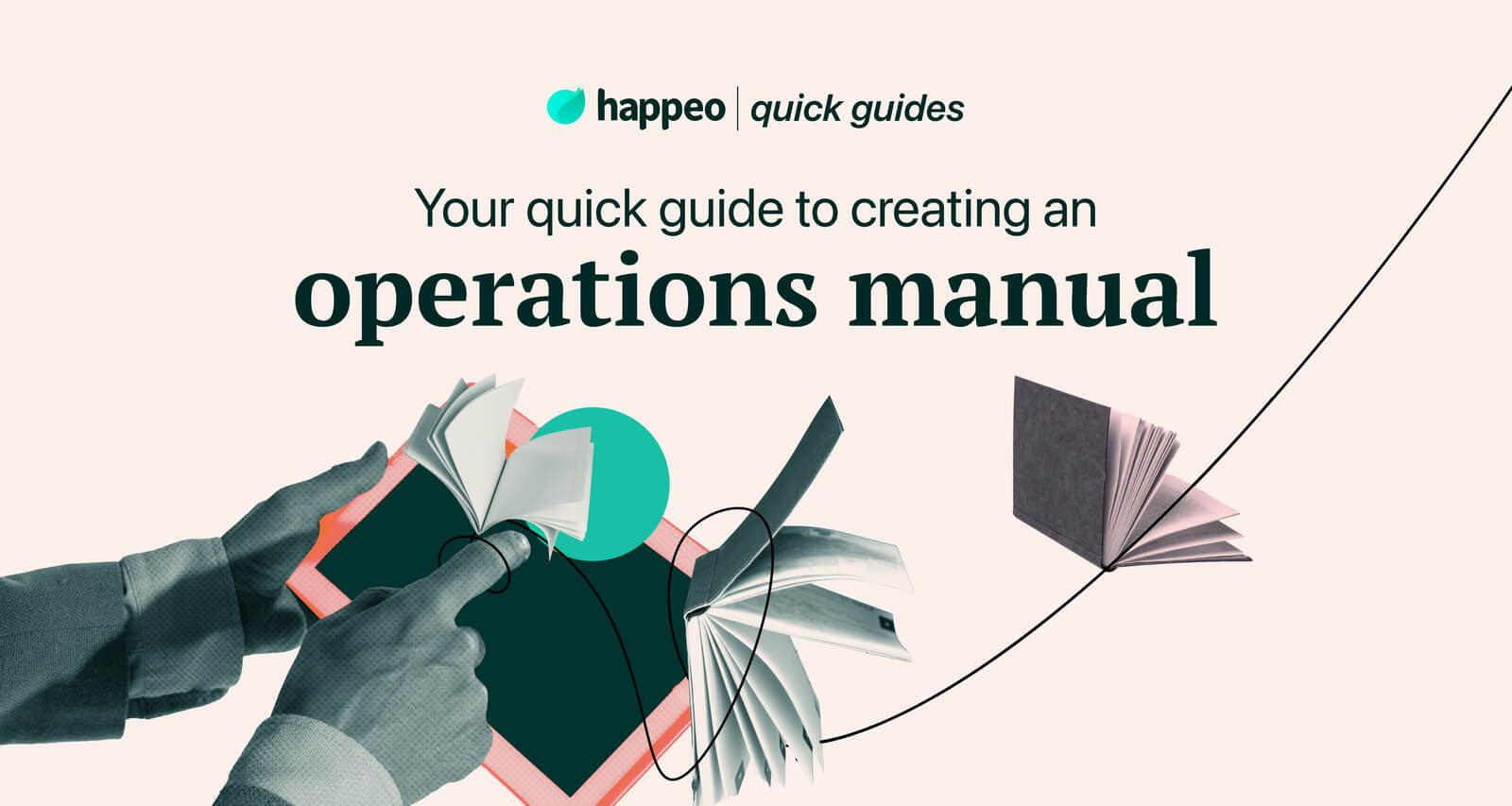
Quick guides Knowledge Management
How to implement a knowledge management framework

7 mins read
Start building your digital home with Happeo
Request a demoQuick guides Knowledge Management
Product
Features
Solutions
Happeo for
Use cases
Resources
Explore
Support
Happeo For
Use cases
Comparisons
Explore
Support
Recent

Jonathan Davies
7 mins read
The way that employees document, share, and retain knowledge is critical for any organization.
Think about it: how much time do you spend looking for internal information or tracking down a particular colleague for help with a task? That’s time you could be spending on business-critical operations.
There is an answer: A McKinsey report found that a centralized record of internal knowledge could reduce this wasted time by as much as 35%. It is possible to successfully gather, publish, and disseminate all of the knowledge that’s already circulating around your organization — you just need the right tools, processes, and policies.
A knowledge management framework is a structure put in place to manage, create, and distribute various forms of organizational knowledge. It encompasses the technology used to facilitate knowledge sharing, the leaders that champion it, and the processes you develop to manage knowledge assets.
A well-implemented knowledge management system should include:
Picture this: You’ve spent months searching for the right candidate for a role. You’ve read hundreds of CVs, conducted tons of interviews, and — finally — landed a top candidate.
They start the job, and everything’s going great — until it isn’t. Before you know it, they’ve handed in their notice, and you’re back at square one. This isn’t just annoying — it’s a huge blow to business. According to SHRM, the cost of replacing an employee could be as much as 50–67% of their annual salary.
And yet, this situation is surprisingly common: a recent survey revealed that 31% of respondents had quit a job in the first six months; 23% did so because they hadn’t received clear guidelines about their role, and a further 21% said they had lacked effective training.
These problems could be solved with a solid knowledge management framework. The first few months of an employee’s tenure with your company is typically a time when they need to absorb a lot of information, fast. If they don’t know where to find this information and aren’t offered support, it’s not surprising that many don’t last the year.
Of course, even the best employees do eventually leave. And when they do, you need to make sure they don’t take all of their valuable skills, knowledge, and experience with them.
The fact is, no one person should hold the keys to your organization. By formalizing knowledge management processes, you can ensure that knowledge is accessible to everyone.
These are just some of the reasons why a knowledge management framework is crucial to business success. It can also help you to avoid information silos, prevent duplication of work, and eliminate inconsistencies across your organization.
Here are the five key components you need to build an effective knowledge management framework:
1. People
Implementing knowledge management is a large undertaking that gets to the core of your organization. And to make it work, you need to have the right leaders and champions in place.
To begin with, look for senior leaders in departments with a strong emphasis on knowledge and how it’s transmitted. HR, IT, sales, marketing, and customer experience can be a good place to start. These leaders will not only help you to roll out your strategy, but also act as key advocates who will champion it across your organization.
As your knowledge management framework grows, assign someone in each department to oversee the knowledge their teams share. You should also ensure someone is responsible for introducing new hires to your organization’s knowledge management system.
2. Process
Another vital component to consider when developing your knowledge management plan is the process by which you will capture, store, and disseminate knowledge.
To set up a strong knowledge management process, first, think about the types of knowledge that you want to make available to your employees. Remember that you can always scale your framework as you grow, and that it might be easier to begin with a few core teams before rolling out to the whole company.
You should also develop workflows for creating and vetting documented knowledge to ensure it's relevant and meets company standards. Another important consideration is the lifecycle of your organizational knowledge. Determining how you’ll review and archive outdated content ensures everyone is working with up-to-date information.
3. Content
In the context of knowledge management, content is any kind of documented knowledge. This could include best practices documents, processes, or project documentation.
To build out an intuitive content structure, it’s a good idea to define the naming conventions and taxonomy you’ll use to organize content from the start. This helps you to avoid confusion down the line.
If you don’t formalize these elements, your employees will still use content — but they’ll create unstructured storage systems, put content in places others can’t find, duplicate work, and even end up working with incorrect or out-of-date information.
A properly managed strategy for managing your content is therefore essential to ensure knowledge assets are consistent, up-to-date, and accessible to the people who need them.
4. Strategy
A successful KM framework needs a clear, documented, and business-aligned knowledge management strategy. Take the time to carefully document all of the knowledge management components above. Then, build a business case that includes:
5. Technology
Lastly, you need to invest in a platform to manage knowledge within your organization.
Here are some key features to look for in a knowledge management solution:
Implementing a secure, robust, and effective knowledge management framework for your company doesn’t need to be a headache — as long as you have the right tools.
Happeo is an enterprise knowledge management system that makes it easy to capture, retain, and share knowledge across your organization. Through our user-friendly universal search function, your teams can instantly find the information they need. Plus, our lifecycle management features ensure your content will never be out of date.
Organizations around the world use Happeo to increase productivity, develop a strong collaborative culture, and drive business growth.
Want to join them? Book a personalized demo to find out how we could help your organization to thrive.
